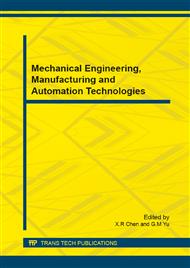[1]
Amir Nimtaj, Mohammad Hossein Bagheripour. Non-linear seismic response analysis of the layered soil deposit using hybrid frequency–time domain (HFTD) approach [J], European Journal of Environmental and Civil Engineering, 2013, 17(10)1039-1056.
DOI: 10.1080/19648189.2013.844205
Google Scholar
[2]
Assimaki, D., Kausel, E. An equivalent linear algorithm with frequency and pressure dependent moduli and damping for seismic analysis of deep sites[J], Journal of Soil Dynamics and Earthquake Engineering, 22 (2002) 959–965.
DOI: 10.1016/s0267-7261(02)00120-3
Google Scholar
[3]
Bazrafshan moghaddam, A., Bagheripour, M. H. Ground response analysis using non-recursive matrix implementation of hybrid frequency-time domain (HFTD) approach[J], Scientia Iranica, 18(2011) 1188–1197.
DOI: 10.1016/j.scient.2011.11.019
Google Scholar
[4]
Narayan Roy, Ravi SankarJakka and H. R. Wason, Effect of surface wave inversion non-uniqueness on 1D seismic ground response analysis [J], Nat Hazards, 68 (2013) 1141–1153.
DOI: 10.1007/s11069-013-0677-z
Google Scholar
[5]
Sun Jing, Gong Maosheng and Tao Xiaxin. Dynamic shear modulus of undisturbed soil under different consolidation ratios and its effects on surface ground motion [J], Earthquake Engineering and Engineering Vibration, 2013, 12(4)561-58.
DOI: 10.1007/s11803-013-0197-6
Google Scholar
[6]
Diego C. F. Lo Presti, Carlo G. Lai and Ignazio Puci. ONDA: Computer Code for Nonlinear Seismic Response Analyses of Soil Deposits [J], J. Geotech. Geoenviron. Eng. 132(2006)223-236.
DOI: 10.1061/(asce)1090-0241(2006)132:2(223)
Google Scholar
[7]
Idriss I M, Seed H B. Seismic response of horizontal soil layers [J]. Journal of the Soil Mechanics and Foundation Division, ASCE, 1968, 94(SM4)1003-1031.
DOI: 10.1061/jsfeaq.0001163
Google Scholar
[8]
Idriss I.M., Sun. Josephi. User's manual for SHAKE91—A computer program for conducting equivalent linear seismic response analyses of horizontally layered soil deposits: Center for Geotechnical Modeling[R]. Department of Civil & Environmental Engineering, University of California, Davis, California, (1992).
Google Scholar
[9]
Li Xiaojun. A simple function expression soil dynamic constitutive relation[J]. Chinese Journal of Geotechnical Engineering. 1992, 14(5)90-94.
Google Scholar
[10]
Tao Lu, Jingyan Huo, Mianshui Rong. Nonlinear Response Analysis of Soil Layers Under Severe Earthquake, ICESE( 2011).
Google Scholar
[11]
Wong H L., Trifunac M D. Scattering of plane SH waves by a semielliptical canyon, EESD, 3(1974)157-169.
Google Scholar
[12]
Yoshida, N., Kobayashi, S. and Suetomi, I., Miura.K. Equivalent linear method considering frequency dependant characteristics of stiffness and damping[J]. Journal of Soil Dynamics and Earthquake Engineering, 22(2002), 205–222.
DOI: 10.1016/s0267-7261(02)00011-8
Google Scholar


